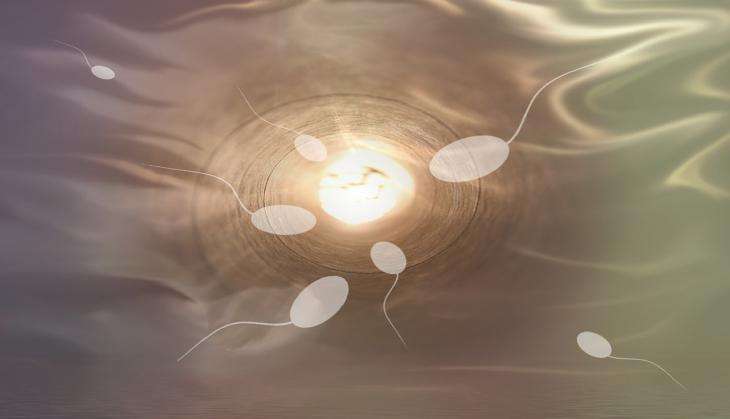
Scientists are developing new low-cost sperm sorting devices that can select the best sperm cells for assisted reproductive technologies such as in-vitro fertilisation, increasing the chances of a successful pregnancy.
The competition is fierce and only the strongest survive the obstacle course within the female reproductive tract.
Of the millions of sperm that enter the vagina, only about 10 or so make it to the oocyte or egg, demonstrating how rigorous the natural sperm selection process really is.
While in-vitro fertilisation, intrauterine insemination, and intracytoplasmic sperm injection have been effective treatment options for infertile couples, only about one-third of these methods result in live births.
The most commonly used or conventional method for assisted reproductive technologies involves a technique called centrifugation.
This technique spins the sperm samples around and at the end, the most motile sperm are used for reproductive medicine.
Although this method is efficient at selecting motile and normal sperm, the process is problematic because it tends to increase levels of chemicals that cause DNA damage.
This technique is less efficient at selecting mature sperm or getting rid of sperm that are near death.
Waseem Asghar from Florida Atlantic University in the US is currently working on developing easy-to-use and inexpensive sperm sorting devices that have applications in intrauterine insemination, intracytoplasmic sperm injection, and in vitro fertilisation.
"Microfluidic based technologies have surfaced as a novel substitute to conventional methods that use centrifugation," said Asghar.
"These are devices that use small volumes of fluid, can enable more control to precisely sort cells within small volumes, and are created to mimic what happens naturally in the female genital tract," he said.
Asghar's device consists of one inlet for the injection of a raw unprocessed semen sample and two plastic chambers separated by porous membrane.
The most healthy and motile sperm swim through the porous membrane leaving behind less functional and dead sperm in the bottom chamber.
Using this sorting technology, a technician just has to inject the semen sample into the device and can then collect healthy sperm from the top chamber in about 30 minutes, making it very easy to use.
Prior studies of microfluidic devices have shown that motility of the sperm sample increased to almost 100% and morphology of the isolated sperm also was improved after microfluidic sorting.
Compared to other techniques used for assisted reproductive technologies, the use of the microfluidic device resulted in significantly lower rates of DNA damage and improved sperm recovery using this method.
-PTI







![BJP's Kapil Mishra recreates Shankar Mahadevan’s ‘Breathless’ song to highlight Delhi pollution [WATCH] BJP's Kapil Mishra recreates Shankar Mahadevan’s ‘Breathless’ song to highlight Delhi pollution [WATCH]](http://images.catchnews.com/upload/2022/11/03/kapil-mishra_240884_300x172.png)

![Anupam Kher shares pictures of his toned body on 67th birthday [MUST SEE] Anupam Kher shares pictures of his toned body on 67th birthday [MUST SEE]](http://images.catchnews.com/upload/2022/03/07/Anupam_kher_231145_300x172.jpg)






